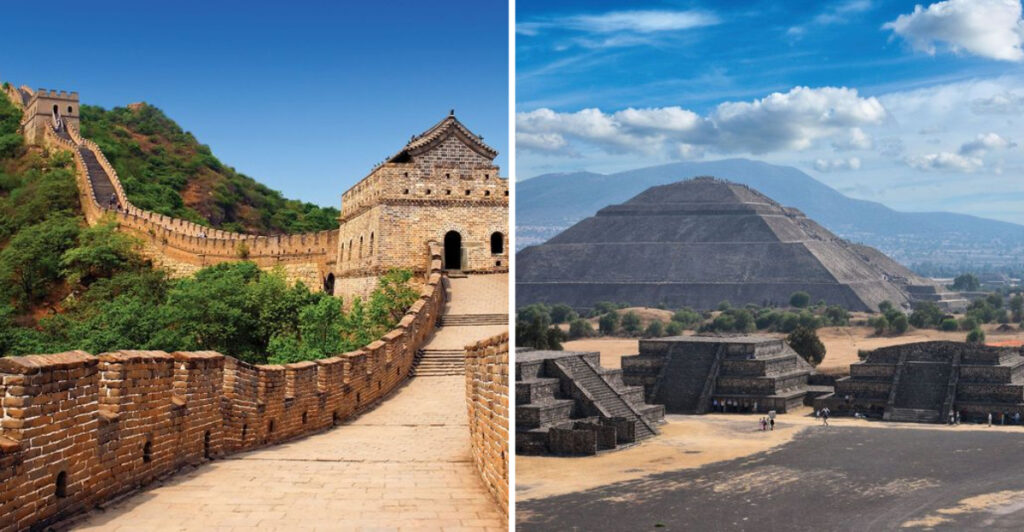Exploring ancient sites provides an intriguing glimpse into the past, offering both educational value and historical insight. However, not every site lives up to expectations. While many ancient locations can significantly enhance your knowledge, a few might not be worth the visit. Here’s a list of 17 enriching ancient sites contrasted with 3 that may not make the grade.
Machu Picchu
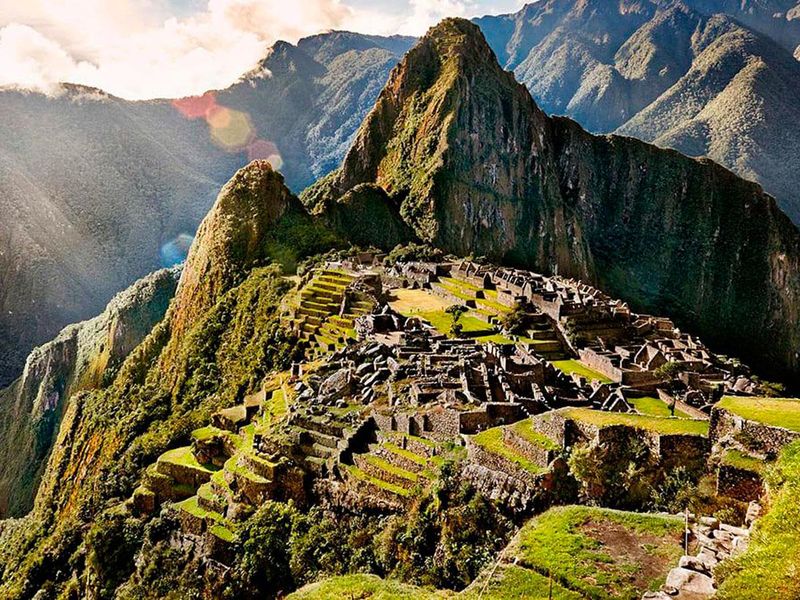
Machu Picchu, perched high in the Andes Mountains, captivates visitors with its remarkable architecture and stunning vistas. This ancient Incan city was built in the 15th century and mysteriously abandoned soon after. Its purpose remains a subject of speculation, adding an element of mystery to its allure.
The site is a testament to the Inca’s advanced engineering skills, with structures that align perfectly with astronomical events. Travelers often feel a deep connection to the past as they walk among the ruins. Visiting Machu Picchu is like stepping back in time, offering a unique educational experience.
The Colosseum

The Colosseum in Rome stands as a powerful symbol of the ancient Roman Empire’s grandeur. Built nearly 2,000 years ago, it was the epicenter of entertainment, hosting gladiatorial contests and public spectacles. The sheer scale of the amphitheater is awe-inspiring, accommodating up to 80,000 spectators.
Exploring the Colosseum offers insights into Roman engineering and societal norms of the time. Despite its partial ruin, the structure’s imposing presence still evokes a sense of historical magnificence. The Colosseum provides a profound understanding of ancient Roman culture and remains a must-visit for history enthusiasts.
Great Wall of China

The Great Wall of China is an enduring symbol of perseverance and strength. Spanning thousands of miles, this ancient fortification was constructed over centuries to protect Chinese states from invasions. Its massive scale and intricate construction reflect the determination of Chinese dynasties.
Walking along the wall, visitors are mesmerized by the breathtaking landscapes and the sheer magnitude of the structure. Each stone tells a story of resilience and innovation. The Great Wall not only served a military purpose but also facilitated cultural exchange and trade, making it a cornerstone of Chinese history.
Petra
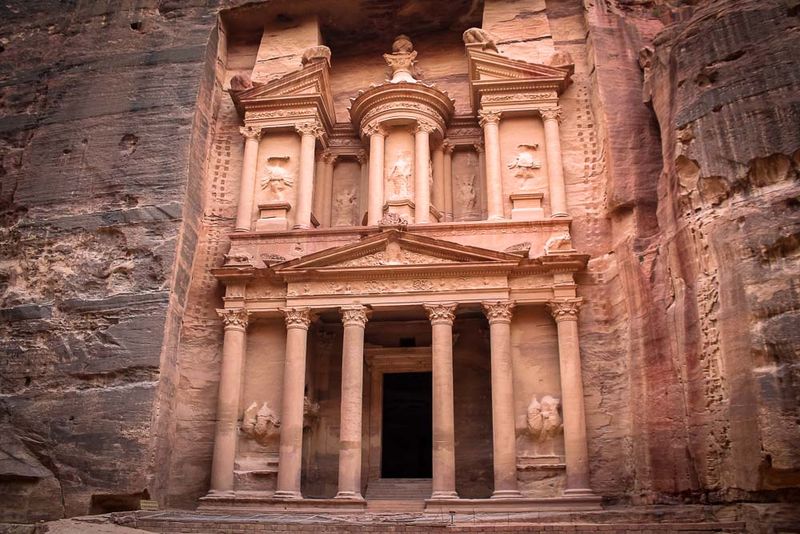
Petra, often referred to as the “Rose City,” is a marvel of engineering and artistry. This ancient city, carved into the rock face by the Nabataeans, thrived as a trading hub in the Arabian Desert. Its most famous structure, Al-Khazneh, or the Treasury, draws visitors with its intricate façade.
Exploring Petra’s winding passageways reveals a blend of architectural styles influenced by diverse cultures. The site’s historical significance and sheer beauty make it one of the world’s most fascinating archaeological sites. Travelers leave with lasting impressions of Petra’s unique charm and historical importance.
Stonehenge
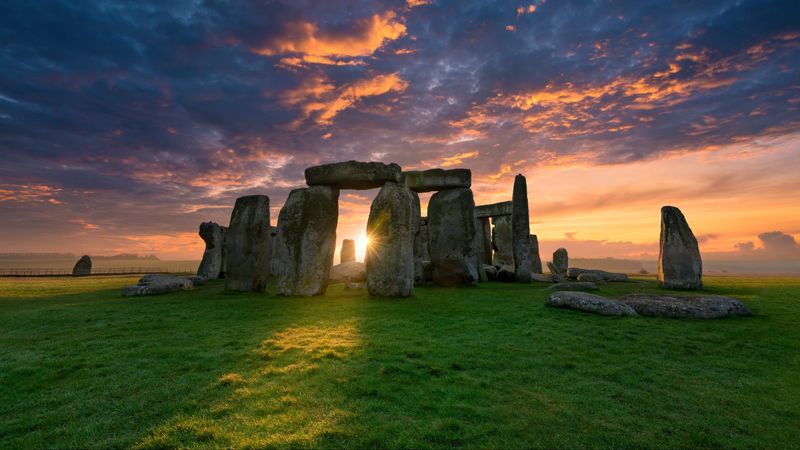
Stonehenge, located in Wiltshire, England, remains one of history’s most enigmatic monuments. Its massive stones, arranged in a circular pattern, have sparked countless theories regarding their purpose and construction. Archaeologists estimate it was built over 4,000 years ago.
The site is steeped in mystery, with theories ranging from religious ceremonies to astronomical alignments. Visitors often feel a sense of wonder and curiosity as they ponder the secrets held by these ancient stones. Stonehenge continues to be a source of fascination and inspiration for those seeking to connect with the distant past.
Pyramids of Giza
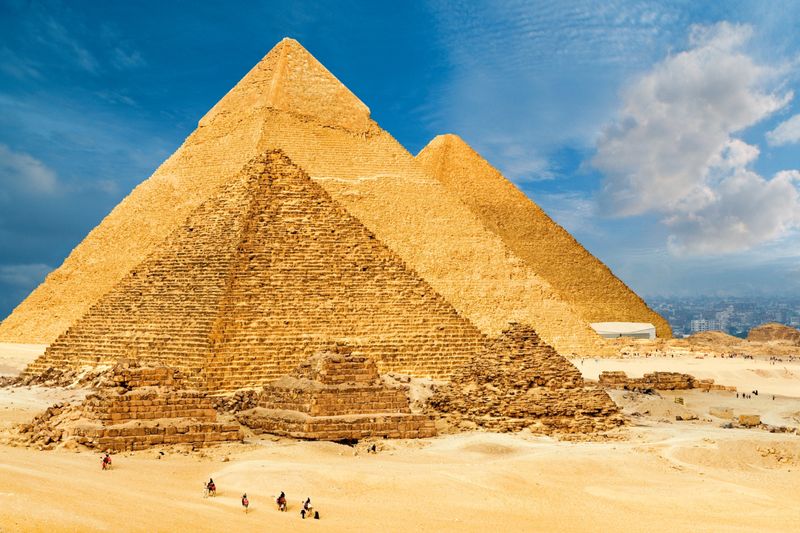
The Pyramids of Giza, towering majestically on the outskirts of Cairo, are a testament to ancient Egypt’s architectural brilliance. Built as tombs for pharaohs, these pyramids have stood the test of time, symbolizing the might and ingenuity of the Egyptians.
Among them, the Great Pyramid of Khufu captivates with its precision and scale. Visitors are often awestruck by the grandeur of these structures, contemplating the ancient techniques used in their construction. The Pyramids of Giza remain a powerful reminder of Egypt’s rich history and cultural heritage, drawing scholars and tourists alike.
Chichen Itza
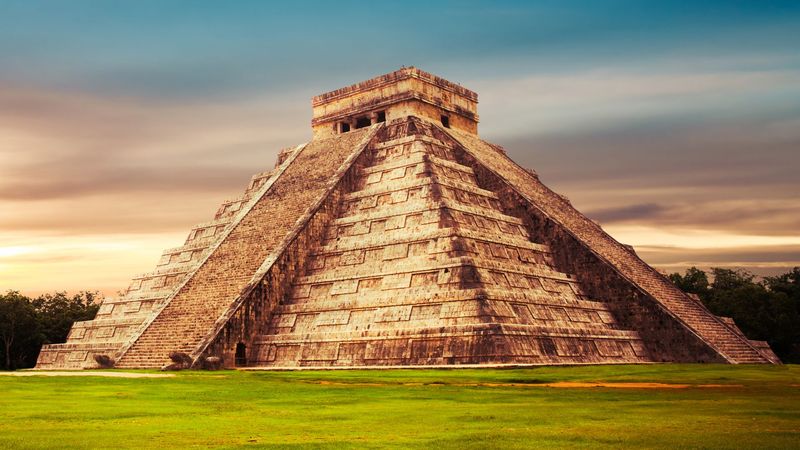
Chichen Itza, a UNESCO World Heritage Site, showcases the architectural and astronomical prowess of the ancient Maya. Located on Mexico’s Yucatan Peninsula, it was a thriving city and ceremonial center. The Temple of Kukulkan, with its serpent shadow phenomenon, is a highlight.
The site’s layout reflects the Maya’s advanced understanding of mathematics and astronomy. Visitors explore a variety of structures, each with its unique significance. Chichen Itza’s rich history and cultural significance make it an essential destination for those seeking to learn about the Maya civilization.
Acropolis of Athens
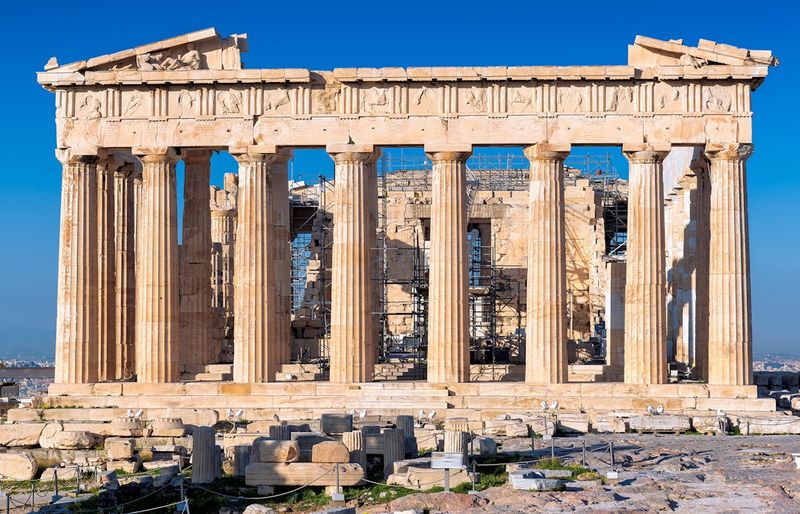
The Acropolis of Athens, crowned by the Parthenon, stands as a symbol of ancient Greek civilization and its enduring legacy. This hilltop fortress served as a religious and political center, showcasing the architectural brilliance of classical Greece.
The Parthenon, dedicated to the goddess Athena, exudes elegance and harmony. Visitors are drawn to the Acropolis for its historical significance and panoramic views of Athens. Walking among the ruins, one can imagine the vibrant life of ancient Athens. The Acropolis remains a testament to the achievements of Greek art and culture, inspiring admiration worldwide.
Angkor Wat
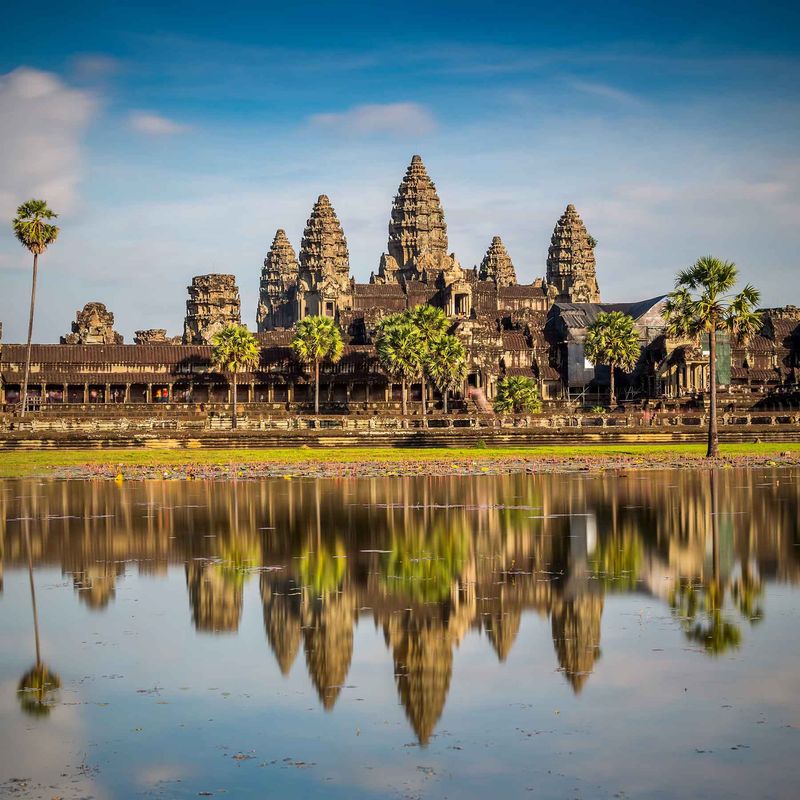
Angkor Wat, the largest religious monument in the world, is a masterpiece of Khmer architecture. Situated in Cambodia, this temple complex was originally dedicated to the Hindu god Vishnu and later became a Buddhist site.
Its grandeur and intricate bas-reliefs depicting mythological tales captivate the imagination. Visitors often experience a sense of awe as they wander through the vast corridors and courtyards. Angkor Wat’s architectural and artistic achievements make it a vital part of Southeast Asia’s cultural heritage, drawing historians and travelers eager to explore its mysteries.
Easter Island Moai
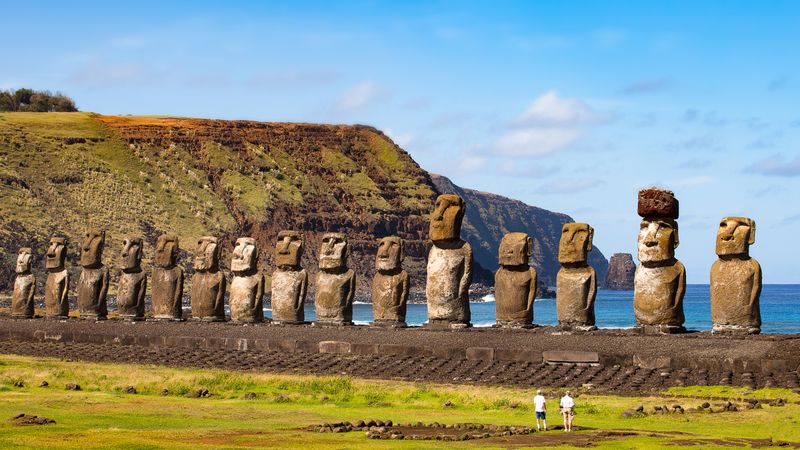
Easter Island, known for its enigmatic Moai statues, offers insight into the Rapa Nui civilization. These colossal stone figures, carved from volcanic rock, stand watch over the island, embodying ancestral spirits.
The purpose and method of their construction remain subjects of intrigue and debate. Visitors are captivated by the island’s isolation and the mysterious aura of the Moai. Exploring Easter Island provides a unique opportunity to delve into the history and culture of its early inhabitants. The Moai continue to fascinate, attracting those eager to uncover their secrets.
Hagia Sophia

Hagia Sophia, located in Istanbul, Turkey, stands as a monumental achievement of Byzantine architecture. Originally constructed as a cathedral, it later served as a mosque and now functions as a museum.
The building’s massive dome and exquisite mosaics are testaments to the artistic and engineering prowess of the Byzantine Empire. Visitors are often awed by the harmonious blend of Christian and Islamic elements. Hagia Sophia’s rich history and architectural beauty make it a vital landmark, offering insights into the region’s cultural and religious evolution over the centuries.
Alhambra
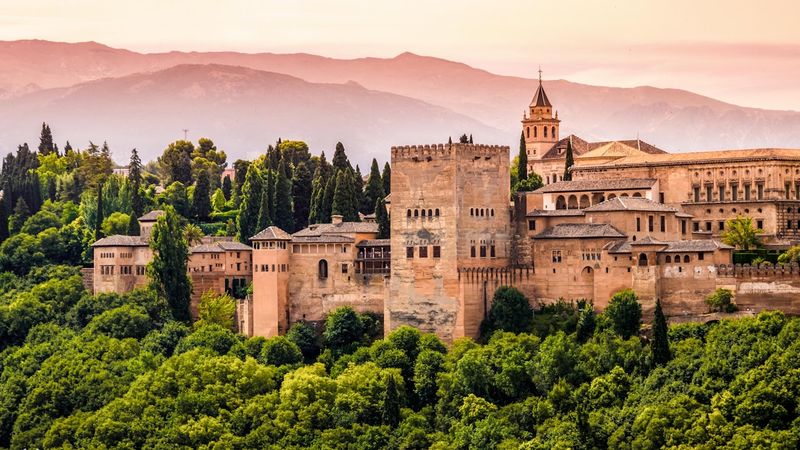
The Alhambra, perched on a hill overlooking Granada, Spain, is a stunning example of Moorish architecture. This palace and fortress complex was originally built in the 13th century and expanded over time.
Its intricate Islamic art and lush gardens create a serene and enchanting atmosphere. Visitors are drawn to its rich history and the interplay of light and shadow within its halls. The Alhambra’s blend of artistry and history offers a glimpse into the splendor of the Nasrid dynasty, making it a cultural treasure that continues to inspire awe and admiration.
Tikal
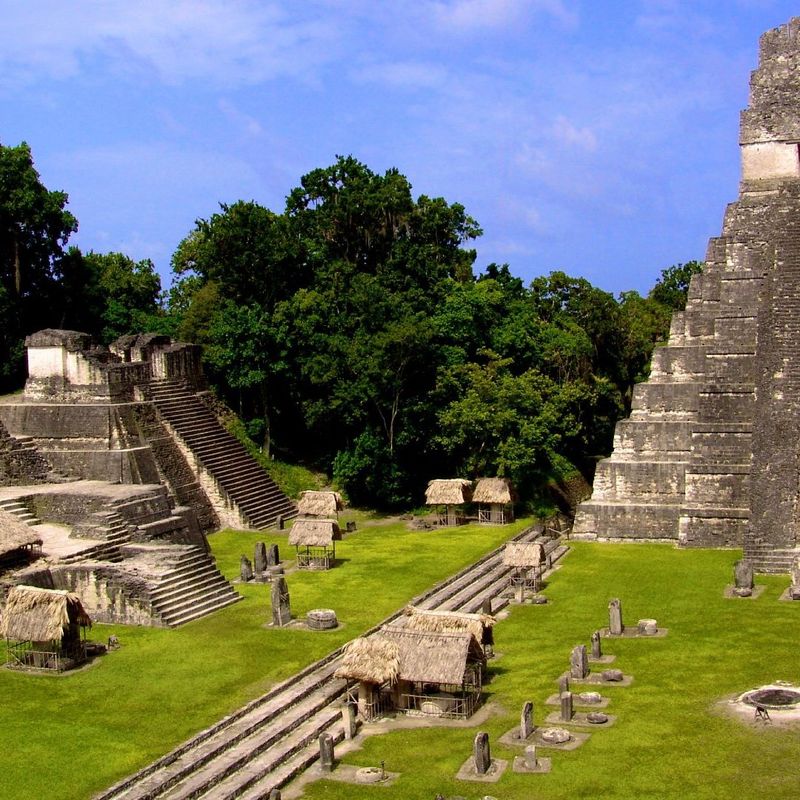
Tikal, nestled in the rainforests of Guatemala, was once a thriving metropolis of the ancient Maya. Its towering pyramids and grand plazas reveal the architectural and cultural achievements of this civilization.
The site was a political and ceremonial center, with structures that served religious and astronomical purposes. Visitors are often struck by the jungle’s sounds and the sheer scale of the ruins. Tikal’s rich history and the mysteries of the Maya draw archaeologists and travelers alike, eager to explore its legacy and uncover the secrets buried within the jungle.
Pompeii
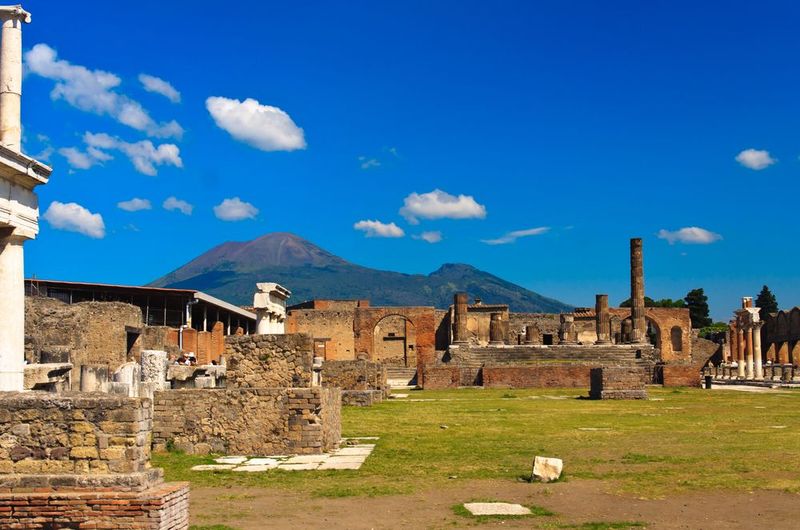
The ancient city of Pompeii offers a unique glimpse into Roman life, frozen in time by the eruption of Mount Vesuvius in 79 AD. Its well-preserved ruins provide insights into daily life, architecture, and culture of the time.
Walking through Pompeii’s streets, visitors encounter homes, shops, and public spaces remarkably intact. The city’s sudden destruction and preservation offer a poignant reminder of nature’s power. Pompeii’s archaeological significance makes it an essential destination for those seeking to understand the complexities of Roman civilization and its enduring impact on history.
Terracotta Army

The Terracotta Army, discovered in Xi’an, China, is a testament to the grandeur of China’s first emperor, Qin Shi Huang. This vast collection of life-sized clay soldiers, horses, and chariots was buried to accompany the emperor in the afterlife.
Each figure is uniquely detailed, showcasing the craftsmanship and artistry of the Qin Dynasty. Visitors are often amazed by the scale and intricacy of the army, reflecting the emperor’s power and vision. The Terracotta Army offers invaluable insights into ancient Chinese burial practices and the legacy of the Qin Empire, fascinating historians and tourists alike.
Borobudur
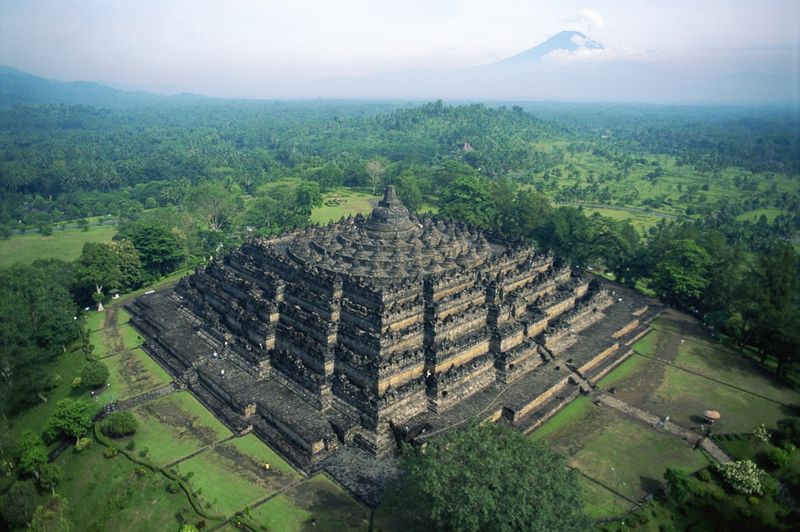
Borobudur, the world’s largest Buddhist temple, is an architectural marvel nestled in Central Java, Indonesia. Built in the 9th century, it consists of nine stacked platforms adorned with over 2,500 relief panels and hundreds of Buddha statues.
The temple’s design reflects Buddhist cosmology and spiritual enlightenment. Visitors often experience a sense of peace and introspection while exploring its intricate carvings. Borobudur’s historical and spiritual significance makes it a vital pilgrimage site and a testament to Indonesia’s rich cultural heritage, attracting those eager to appreciate its profound beauty and meaning.
Luxor Temple
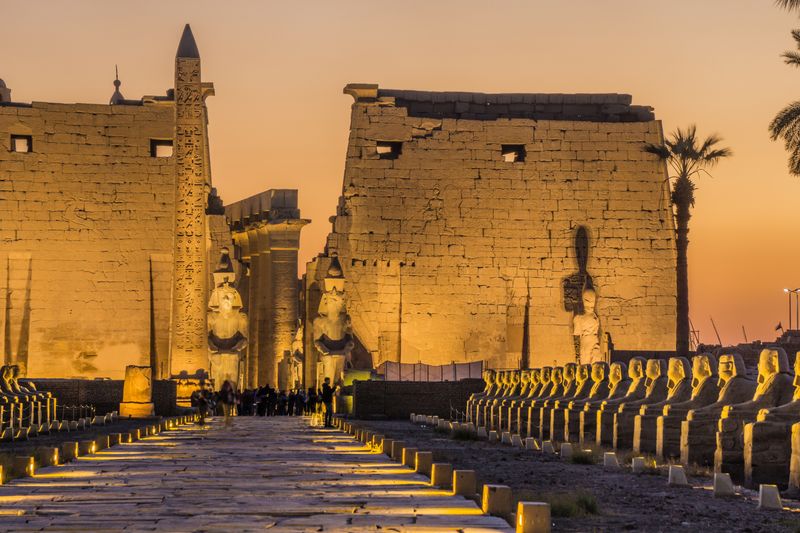
Luxor Temple, situated on the east bank of the Nile River, stands as a monument to ancient Egyptian religion and architecture. Built primarily by Pharaoh Amenhotep III, it was later expanded by Ramses II.
The temple’s grandeur is evident in its colossal statues and intricately carved hieroglyphics. Visitors are often awed by the temple’s scale and historical significance. Luxor Temple remains a testament to the religious and cultural achievements of ancient Egypt, offering insights into the beliefs and artistic skills of its creators. It continues to captivate historians and travelers alike.
Teotihuacan
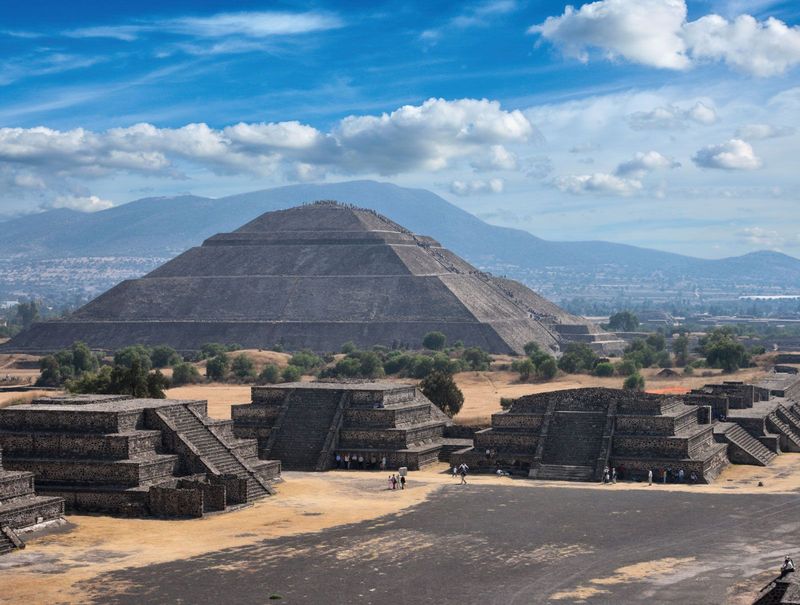
Teotihuacan, known as the “City of the Gods,” is a monumental archeological site in central Mexico. Its immense Pyramids of the Sun and Moon dominate the landscape, reflecting the city’s ancient grandeur.
The Avenue of the Dead connects these pyramids, lined with impressive structures and murals. Visitors are often captivated by the city’s mysterious origins and advanced urban planning. Teotihuacan’s influence on Mesoamerican culture is profound, offering valuable insights into the region’s history and development. It remains a must-visit site for those seeking to understand the complex societies of ancient Mexico.
Temple of Karnak
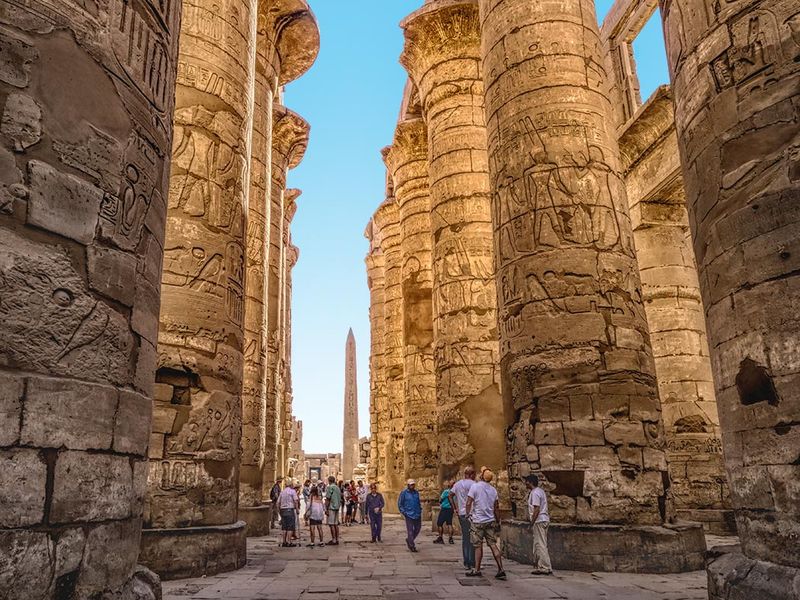
The Temple of Karnak, located in Luxor, Egypt, is one of the largest religious complexes in the world. Dedicated to the god Amun, it was built and expanded over centuries by successive pharaohs.
The temple’s grandeur is evident in its colossal columns, towering obelisks, and detailed carvings. Visitors are often overwhelmed by the site’s scale and the artistry of ancient Egypt. The Temple of Karnak remains a powerful symbol of Egyptian religious and cultural identity, providing insights into the civilization’s architectural innovation and devotion. It continues to inspire awe among visitors from around the globe.
Cahokia Mounds
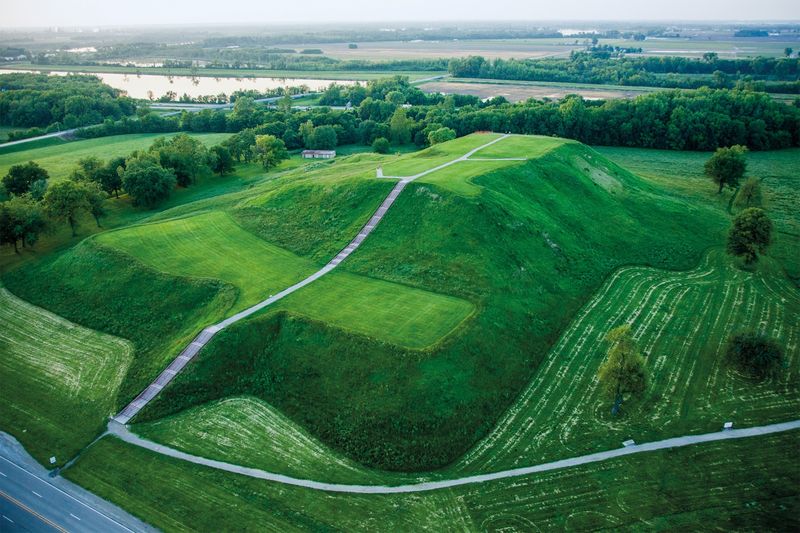
Cahokia Mounds, located near present-day St. Louis, Missouri, was once a thriving pre-Columbian Native American city. At its peak, it was the largest and most influential urban center in North America.
The site is known for its massive earthen mounds, especially Monks Mound, which stands as a testament to the city’s social and religious structure. Visitors gain insights into the sophisticated culture and advanced engineering of the Mississippian people. Cahokia’s archaeological significance sheds light on the complexity and diversity of indigenous civilizations in North America, inspiring scholars and visitors alike.

